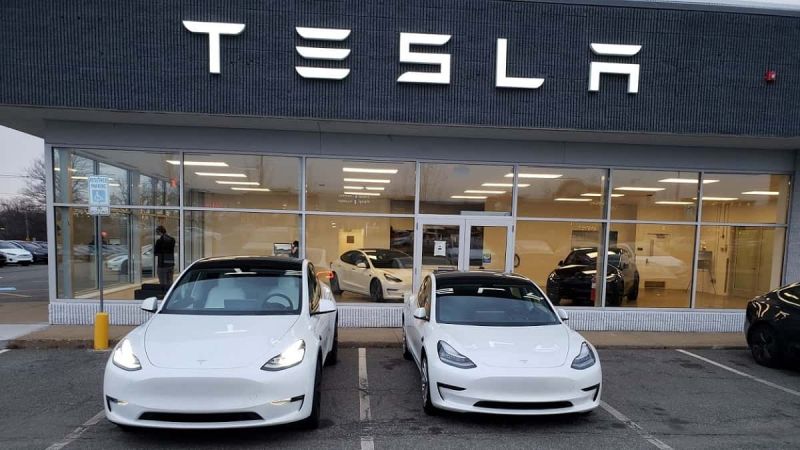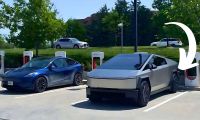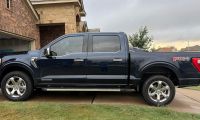Over the past few years, electric vehicles have been among the most difficult vehicles to buy. Tesla has, at times, had lead times many seasons long (longer than multiple months) on the vehicles it builds, and this was without any federal incentive. Vehicles from Ford, Toyota, VW, Hyundai, and other brands that offered vehicles with a plug could not come close to meeting demand. Vehicles with a plug were in such high demand that $20K markups on vehicles like the Toyota RAV4 Prime plug-in were easy to find on social media. People have been buying any EV they can get their hands on. Thus, dealers jack up the prices. In light of this unprecedented demand for EVs, the government felt it needed to take action. To help create demand.
Related Story On Old EV Tax Incentive Program: 4 Presidents Later, Buyers Don’t Know How Federal EV Tax Incentives Work
Your Political Party Got What It Wanted
The new incentive plan replaced the old federal incentive plan that almost nobody could follow. Congresses going back to the days of George Bush have been throwing money at electrified vehicles, and no President's administration missed the party. Funny how the Presidents always get the credit, but only Congress can write and pass tax laws or spend money. The most important part of the plan was that it was tied to taxes. Or manufacturing numbers. Or something. Fun fact; The last EV tax bill was passed by a Republican Congress and signed by a Republican President. Democrat voters were furious. Because it was exactly the same plan a Democratic Congress had sent to a Democratic President to sign a few years earlier. Thank goodness we have this new plan that makes everyone in both parties happy.
A Definite Answer On Which Vehicles Qualify
With that old plan, this manufacturer was in, this one out, and this one temporarily in some sort of multi-quarter transition plan that phased out the federal income tax incentive. The Bolt was in. Then it was on a transition. Then it was out, but not for sale anyway. Now it’s back, but we are not sure if it’s in or out of the program.
It should be in, right? After all, the Bolt is made in America by a company based in America, staffed by card-carrying Union Americans, that the American taxpayers bailed out to the tune of billions not long ago. Yet, the all-American Bolt is not on this list of vehicles that qualify. Even Consumer Reports does not know which vehicles will qualify, saying, “...we don’t know which vehicles will meet the battery portion of the tax credit.” If the smart folks at Consumer Reports can’t follow a government program designed to help Consumers, you know it was a success.
Government Agency Helps Clarify the Plan
Consumer Reports and Green Car Reports may not know exactly which cars qualify and which don't, but the government does. For example, it has a handy chart on its IRS website listing the Chevy Bolt and the Tesla Model Y, saying they do qualify, except they don't in 2022. Which is the year we are currently in the midst of.
A Simple Plan You Need a Decoder To Understand
A handy Vehicle Identification Number (VIN) decoder (that is its actual name) has been created to assist shoppers. Of course, you don't know the VIN of a car you order, so you won't know if the car qualifies until after you buy it, wait several months, then take delivery. It will be fun if all that takes place over say, February, March, and then the April tax deadline comes and goes. Maybe your car qualified, maybe not. Excuse us, did we say car? Silly us, we meant trucks or SUVs. Cars are dead now.
No More Huge Expensive Trucks and SUVs
We red-blooded Americans don’t want fancy cars and big expensive trucks and SUVs in the plan, right? So only $80,000 trucks and SUVs qualify. Because we all know that a $79,999 truck is what every hard-working contractor drives. Sedans, hatchbacks, wagons, and other vehicles can only cost $55,000 and still get the free cash on the dash. So be certain that after tomorrow no automaker would ever be crazy enough to build a sedan, hatchback, wagon, or other vehicle. From here forward, everything is either an SUV or a truck. The folks who wanted a vehicle fleet with a smaller vehicle footprint got exactly what they didn’t want.
This Plan Shows Dealers Who Is Boss By Giving Them The Money
If there is one thing we can all be certain of, it is that over the past three years, federal EV incentives seemed to benefit car dealers the most. After all, if a car comes with a $7,500 tax break, why not mark it up by, say, $7,500? Nobody likes the idea of the dealers being the beneficiaries of tax plans. So the government changed the way the new incentives work. With the past plan, your to had to file your taxes to get the benefit. Now you can transfer the benefit directly to the dealer at the time of purchase. That will show the dealers who is boss, right?
Hard Working Smart Folk Need Not Apply
If you work hard and are successful, this new plan is not for you. There are income redistribution clauses all over this plan. Do you and your spouse earn over $300,000 this year? SHAME! You are no longer allowed to be part of our government's program intended to help cool the planet. Because your government despises you. If you only earned $299,000 together, you are fine. There are qualifications for how successful and hard-working a single filer can be and still help save the planet. Ask your tax preparer to help you, you horrible success story.
The Plan Takes Effect Now. Or In 2023. But For Sure By 2024
Only some cars in 2022 will qualify, or maybe it’s 2023. We do know that the new plan says something about 2024 being important. That’s right, the plan doesn’t just take effect right away. It sort of phases in, then matures, it then adds some new requirements or something. Sound familiar?
The EV Tax Plan To End All Plans
Thankfully, this will be the last EV incentive plan ever. Unless Congress shifts its leadership party in about three months, at which point the whole program could be scrapped. Or updated. Or expanded.
Image of Tesla showroom featuring cars not presently included in the Clean Vehicle Credit program by John Goreham.
John Goreham is a long-time New England Motor Press Association member and recovering engineer. John's interest in EVs goes back to 1990 when he designed the thermal control system for an EV battery as part of an academic team. After earning his mechanical engineering degree, John completed a marketing program at Northeastern University and worked with automotive component manufacturers, in the semiconductor industry, and in biotech. In addition to Torque News, John's work has appeared in print in dozens of American news outlets and he provides reviews to many vehicle shopping sites. You can follow John on TikTok @ToknCars, on Twitter, and view his credentials at Linkedin
Re-Publication. If you wish to re-use this content, please contact Torque News for terms and conditions.












